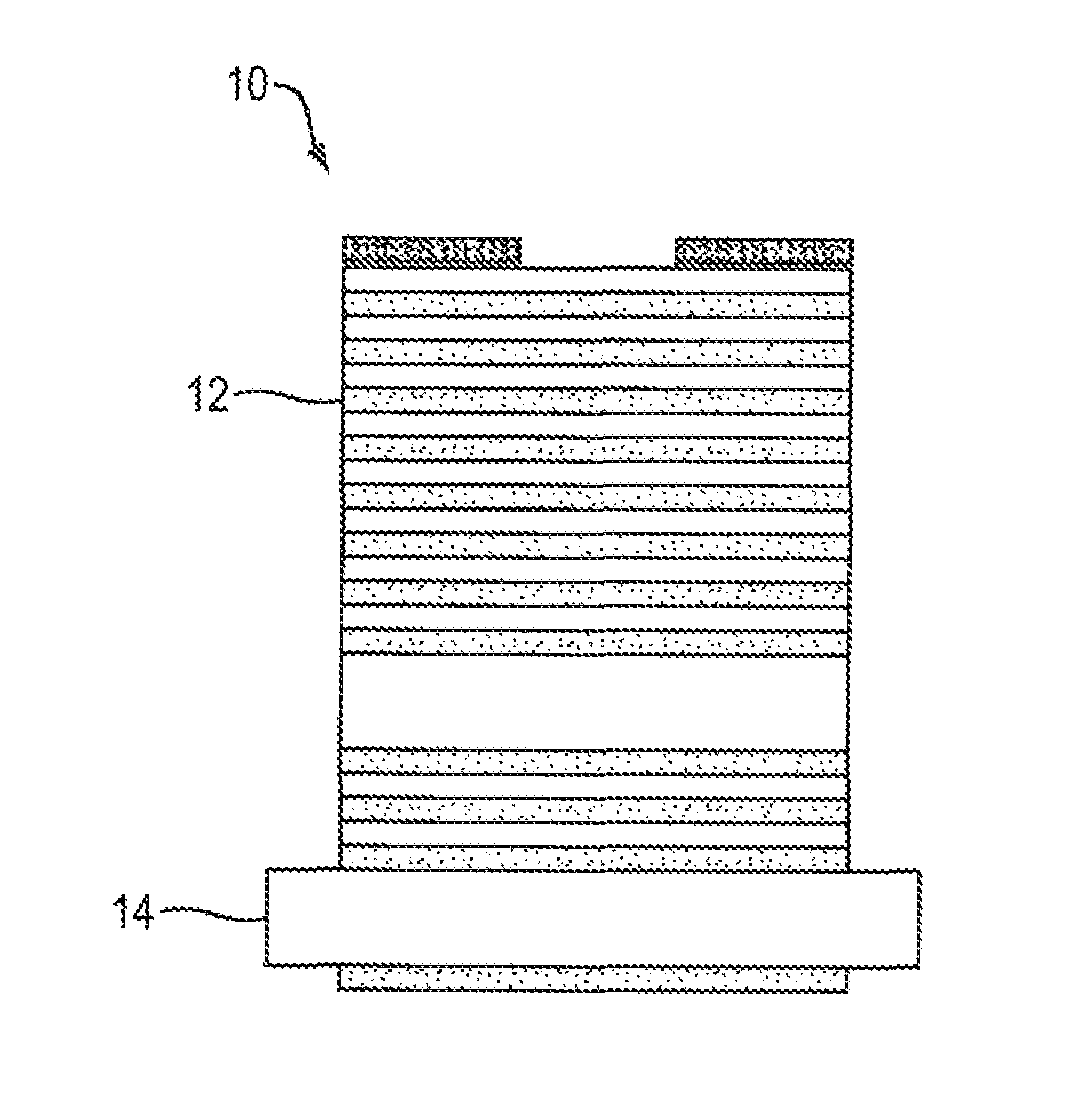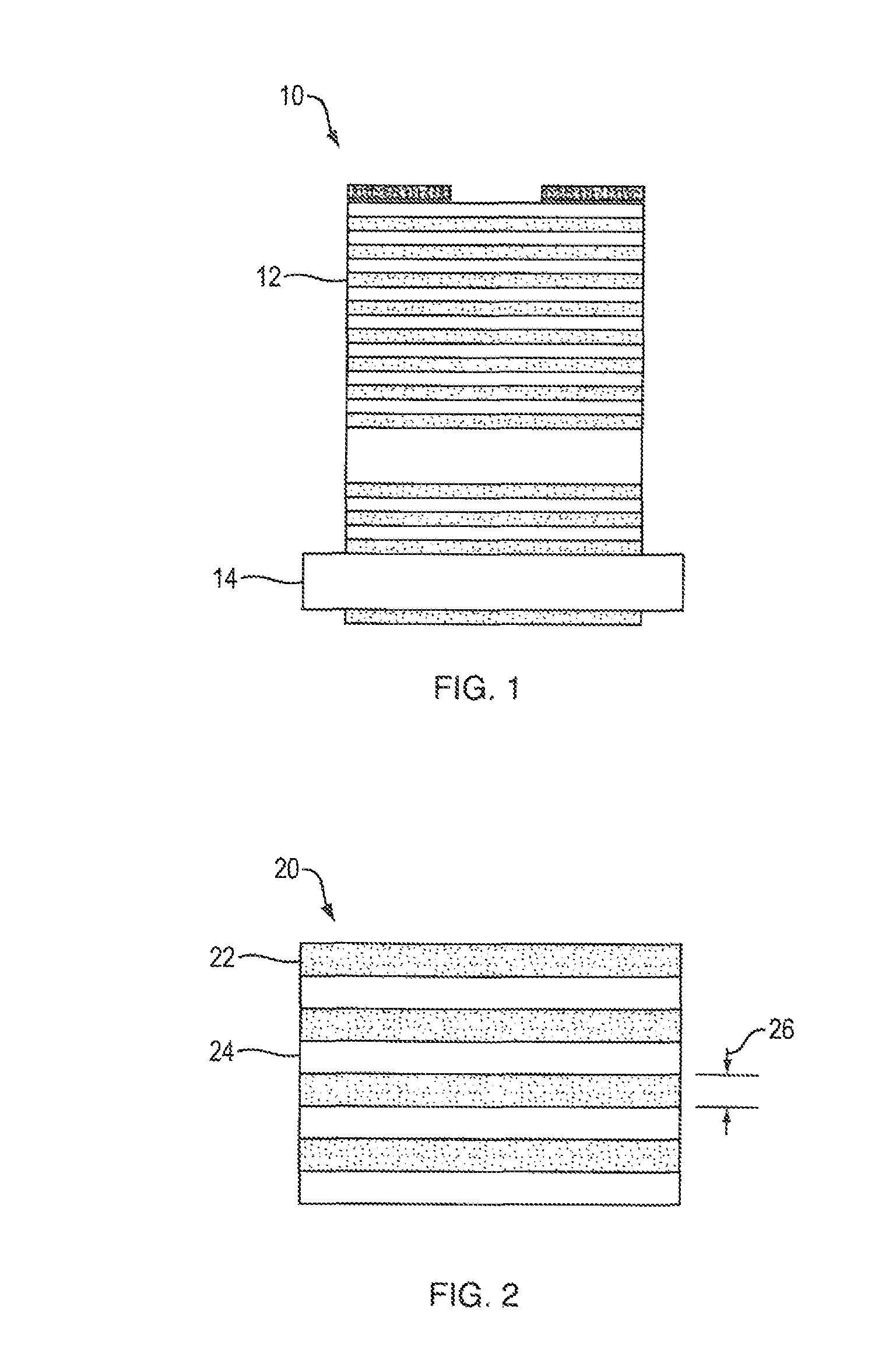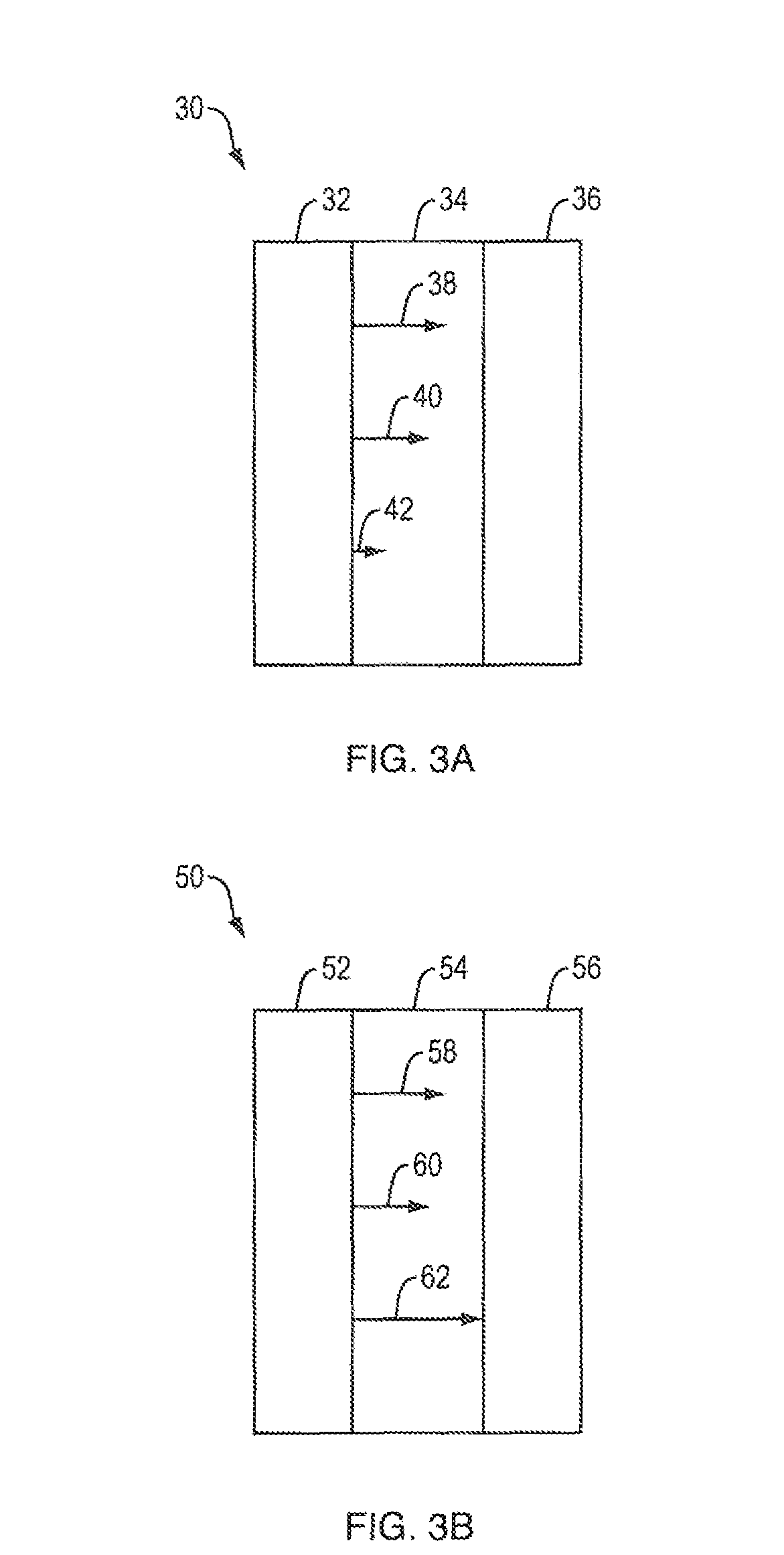Hyperbolic metamaterials as distributed bragg mirrors for high power VCSEL devices
a technology of hyperbolic metamaterials and vcsel arrays, which is applied in the direction of semiconductor lasers, instruments, optical elements, etc., can solve the problems of limited thermal management, primarily limited optical power of pump sources such as laser diodes or vcsel arrays, and often limited lasers, so as to improve the performance and reliability of vcsel arrays, improve thermal management of high-power vcsel arrays, and improve thermal conductivity
- Summary
- Abstract
- Description
- Claims
- Application Information
AI Technical Summary
Benefits of technology
Problems solved by technology
Method used
Image
Examples
Embodiment Construction
[0012]In the present invention hyperbolic metamaterials are implemented in a layered structure in VCSEL design and construction. These materials are extremely anisotropic, being metallic (∈0) in the orthogonal direction—such anisotropy leading to the opening of the photonic density of sates (DOS), and the surface of constant frequency becomes open in a select space k. The wave equation describing a hyperbolic metamaterial is as follows:
[0013]-ω2c2φω=∂2φωɛ1∂z2+1ɛ2(∂2φω∂x2+∂2φω∂y2)
where ∈1 and ∈2 have opposite signs, reducing to
[0014]ω2c2=kz2ɛ1+kxy2ɛ2
[0015]The layered hyperbolic metamaterial essentially replaces the commonly used DBR structure. The hyperbolic metamaterial functions similar to the way a DBR structure does, and acts as a highly efficient heat spreader. This is partly because of the geometric similarity in a DBR structure and a layered metamaterial. FIG. 1 depicts the geometry of a distributed Bragg mirror and quantum well structures found in a typical oxide-confin...
PUM
| Property | Measurement | Unit |
|---|---|---|
| thick | aaaaa | aaaaa |
| thick | aaaaa | aaaaa |
| dielectric constants | aaaaa | aaaaa |
Abstract
Description
Claims
Application Information
 Login to View More
Login to View More - R&D
- Intellectual Property
- Life Sciences
- Materials
- Tech Scout
- Unparalleled Data Quality
- Higher Quality Content
- 60% Fewer Hallucinations
Browse by: Latest US Patents, China's latest patents, Technical Efficacy Thesaurus, Application Domain, Technology Topic, Popular Technical Reports.
© 2025 PatSnap. All rights reserved.Legal|Privacy policy|Modern Slavery Act Transparency Statement|Sitemap|About US| Contact US: help@patsnap.com



